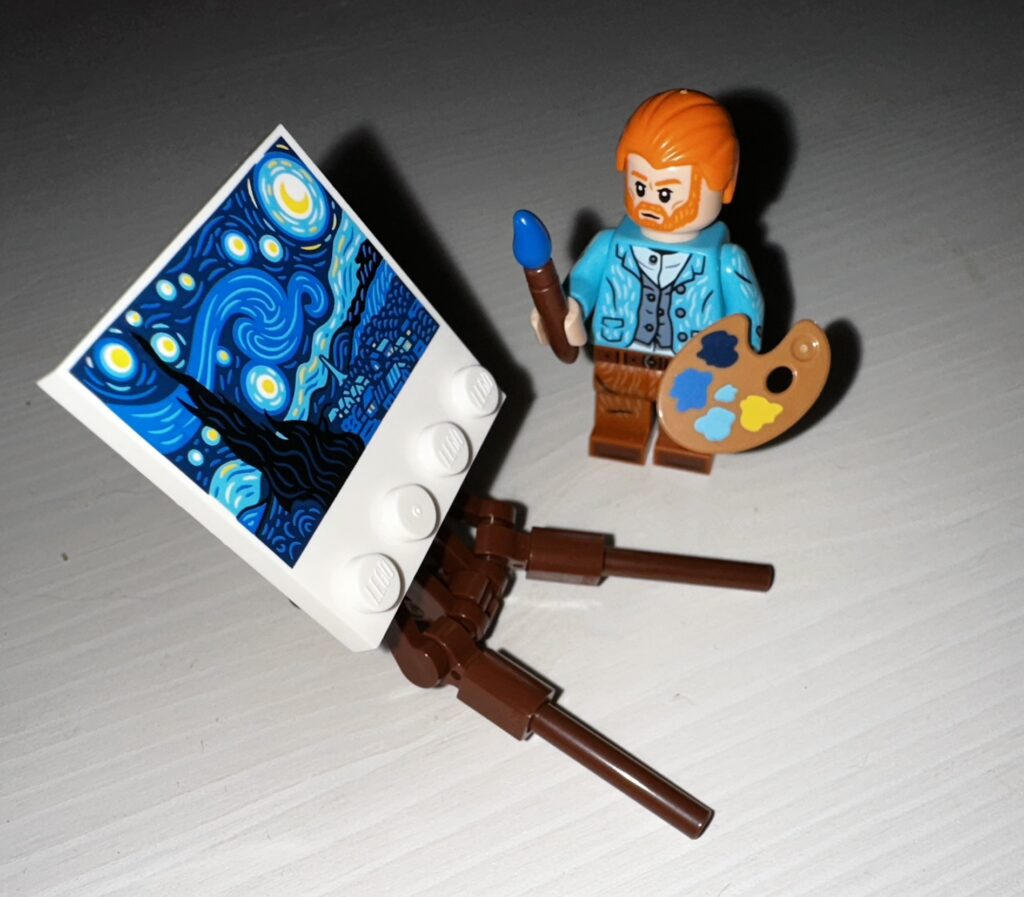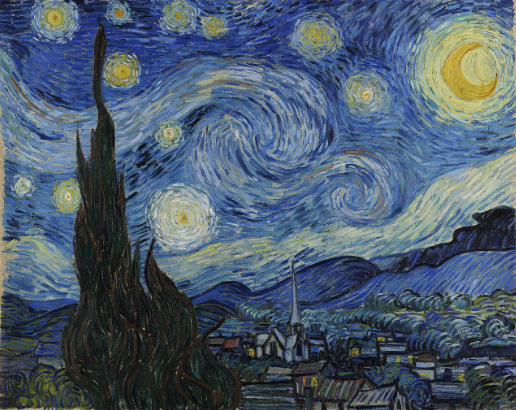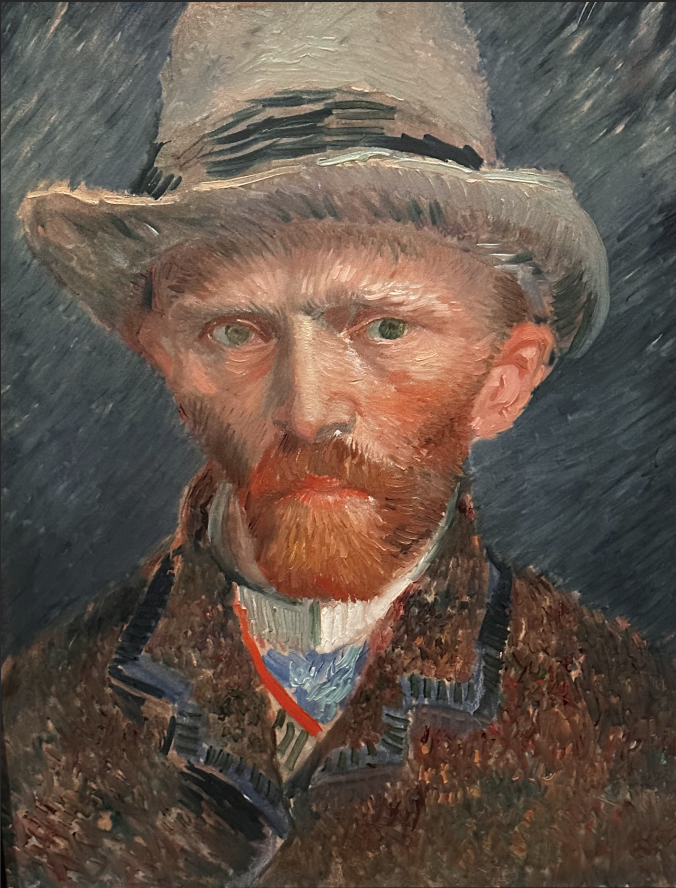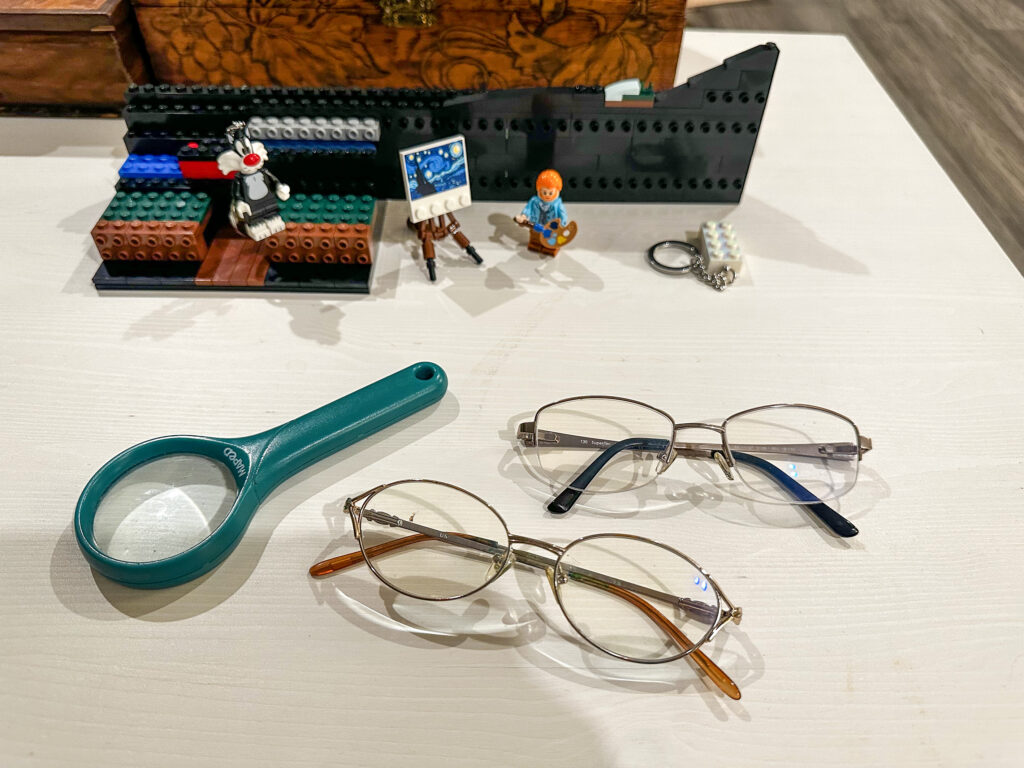August 9, 2023
Today was my birthday. I received art for a present. A huge Lego box with what will be a reproduction in lego bricks of Vincent van Gogh’s Starry Night. It includes an adorable mini-fig of the great Dutch painter and he seems to look kind of surprised by what he sees… It would be almost another century since his birth in 1853 before the first lego brick saw light in 1949. He would not have known what hit him if he saw this special brick, dedicated to one of his most famous works! He might even have been appalled, who knows…


Vincent van Gogh painted Starry Night in 1889 during his stay at the asylum of Saint-Paul-de-Mausole near Saint-Rémy-de-Provence. Van Gogh lived well in the hospital; he was allowed more freedoms than any of the other patients. If attended, he could leave the hospital grounds; he was allowed to paint, read, and withdraw into his own room. He was even given a studio. While he suffered from the occasional relapse into paranoia and fits – officially he had been diagnosed with epileptic fits – it seemed his mental health was recovering.
Mental decline
Unfortunately, he relapsed. He began to suffer hallucination and have thoughts of suicide as he plunged into depression. Accordingly, there was a tonal shift in his work. He returned to incorporating the darker colors from the beginning of his career and Starry Night is a wonderful example of that shift. Blue dominates the painting, blending hills into the sky. The little village lays at the base in the painting in browns, greys, and blues. Even though each building is clearly outlined in black, the yellow and white of the stars and the moon stand out against the sky, drawing the eyes to the sky. They are the big attention grabber of the painting.

The Painter’s self doubt. It is real.
Isn’t it typical that all painters, of great name or just humbly enjoying painting, have doubts about the quality of their work? The other day, I read a quote by Thomas Merton, the famous philosophical and religious writer of such books as ‘No man is an island’ and ‘Thoughts in solitude’. It seems pertinent here. My version of his words is this: “We all strive to make a good impression on other people, to the point that our belief in ourself depends on what others think of us. Isn’t it sad to value you life only by the beliefs of others?”
The tender soul of the artist: easily squashed
I love that quote and it is so true. I would not call myself a master painter. I know that I am an above average painter though. I like what I do, I generally do it well and I do it more for me than for an audience. Yet, how many times have I been asked: have you sold a lot of your work? Or: have you been picked up by a gallery? If the answer to both is ‘No I have not’, there are those who simply turn their back and leave without a further word. Snobs is what I call them! As a teenage girl, my work was on display in an exhibition. This older guy stands in front of one of my portraits and asks me if I have had any foundational art education. I said: “No, I have not, I am self taught”. “Oh, yes I thought so, one can tell”. And then he walked off. I was a young teenager and vulnerable to comments and I remember that it took me a while before I started creating art again. How to crush the tender soul of a young person with one comment… and how unnecessary. It was not as if I had made claims about my own brilliance. I was asked to show my work and it was very exciting. This man, as it turned out later, was the ‘art critic’ for a local paper. Oh well. Maybe he was a miserable flipped author that nobody wanted to publish and it made him sour and mean… Maybe I should feel pity for him…
It has had a lot of impact on me: when someone looks over my shoulder at every stroke of my brush, or when they give me a list of very precise parameters that a painting needs to satisfy, I can feel my artistry drain in an instant. That is why I do not do a lot of commissions. Only if the subject grabs me, fascinates me, will I give it a try. But the result will still be something that I like, and if the customer likes it too: perfect. If not: the work is worth the same to me because I enjoyed creating it.
Vincent van Gogh never believed he was any good at painting. He painted in an emotional way, he gave us a reflection of how he perceived the world. He gave us a glimmer of a peek of what his inner life was like. He oeuvre is marvellous. He was marvellous!

